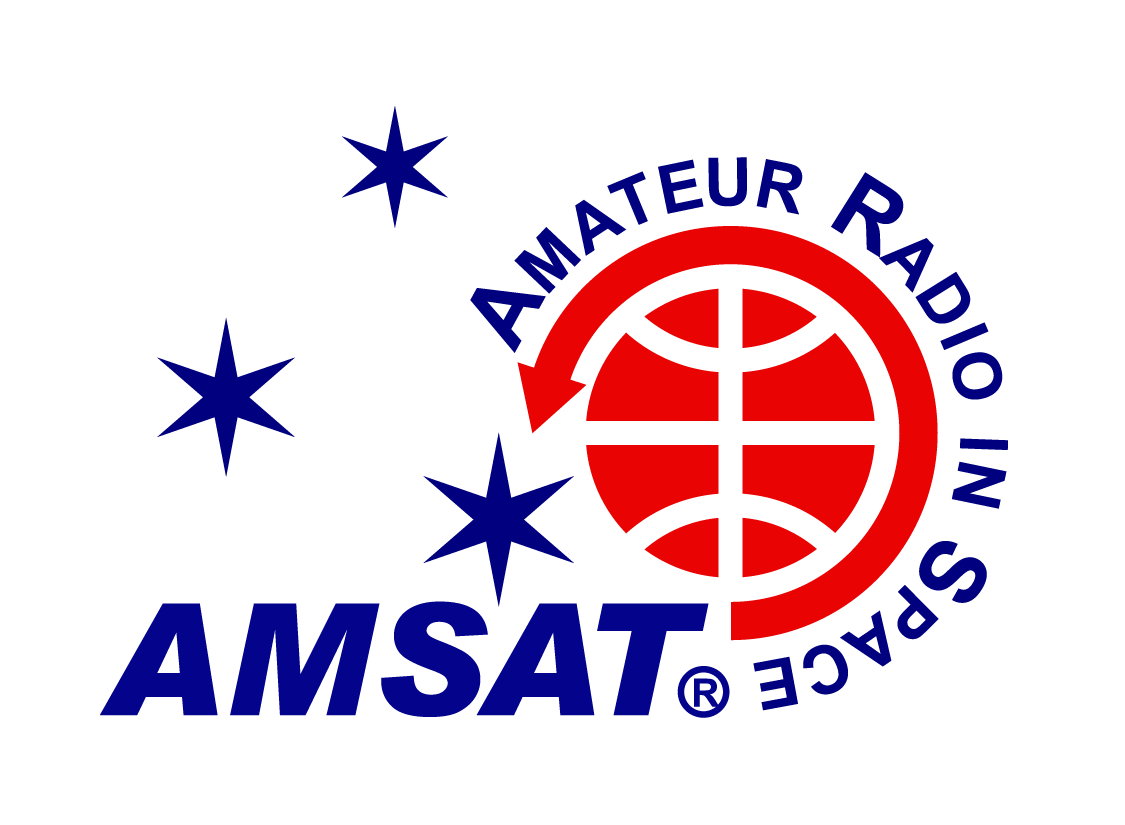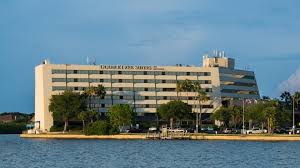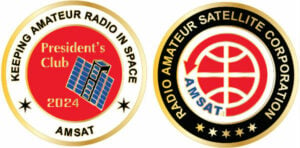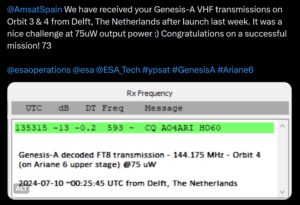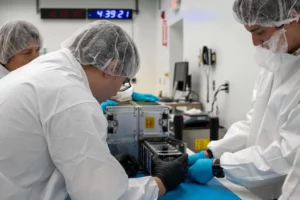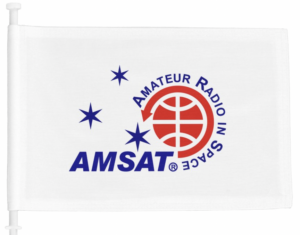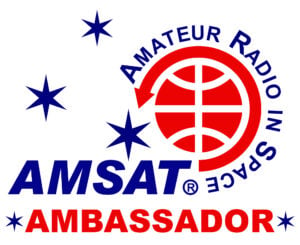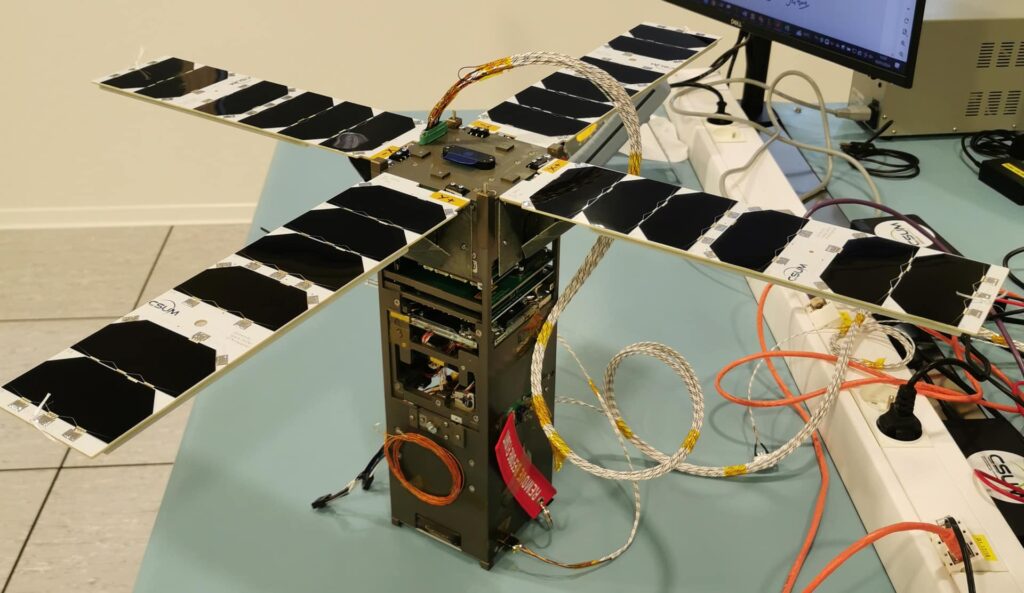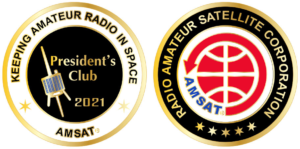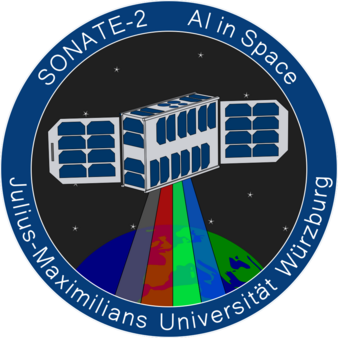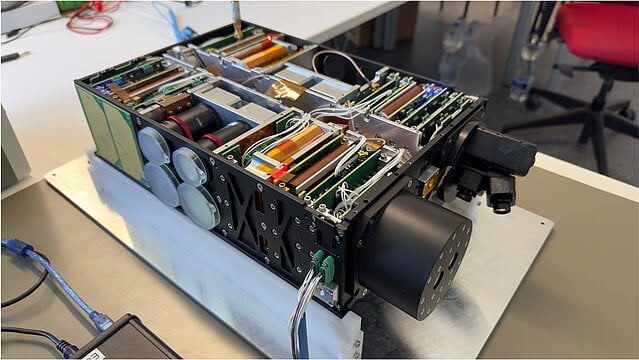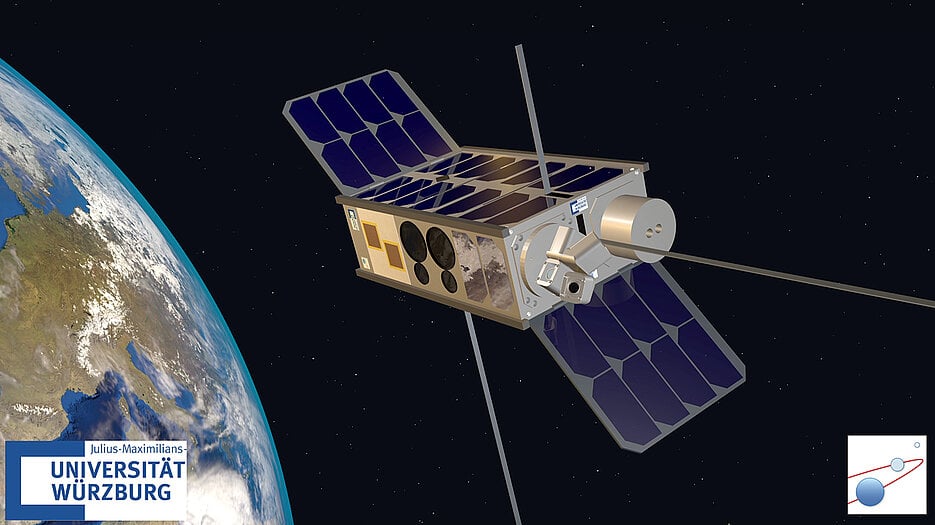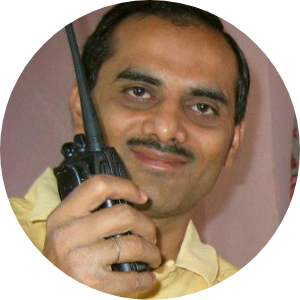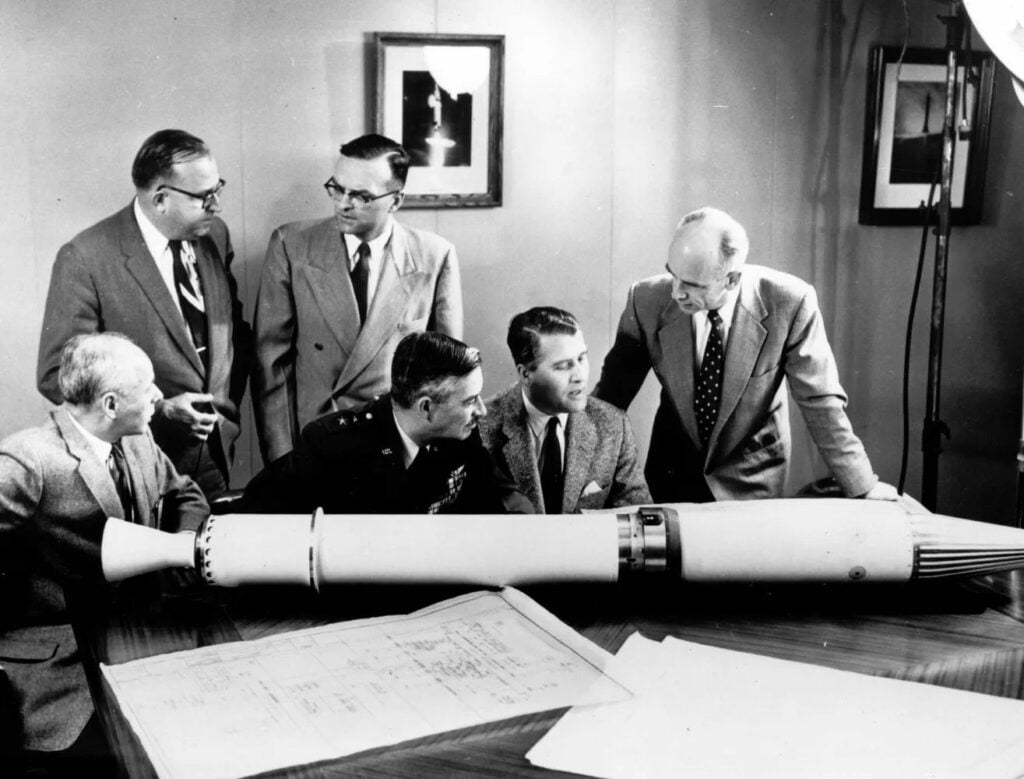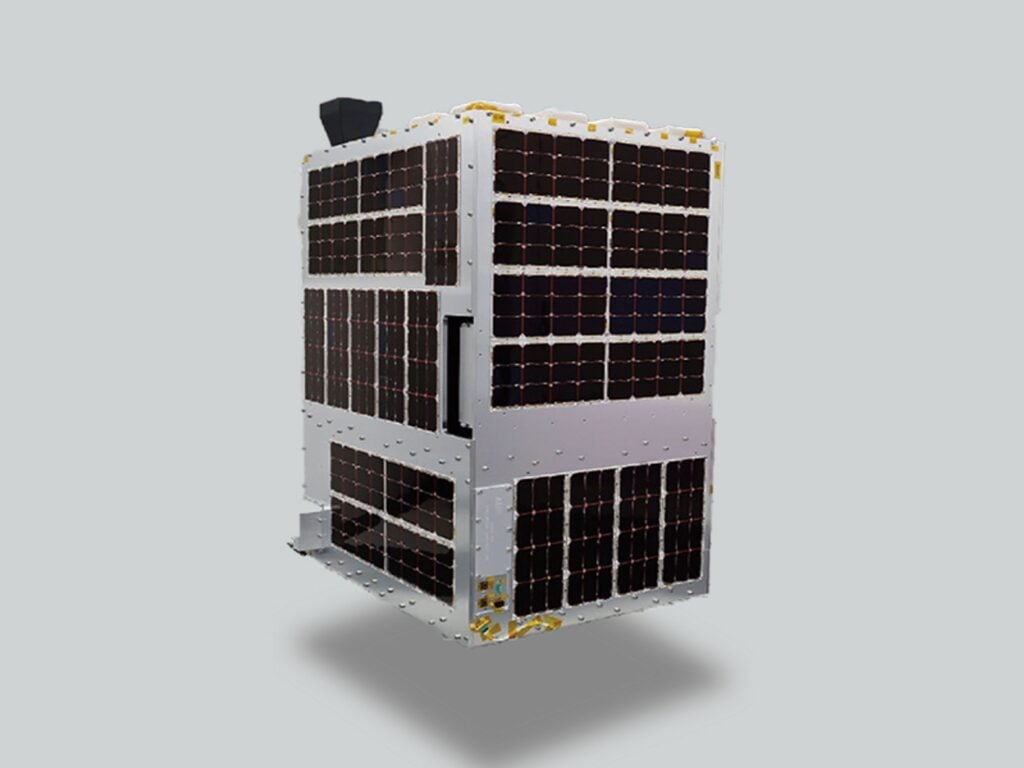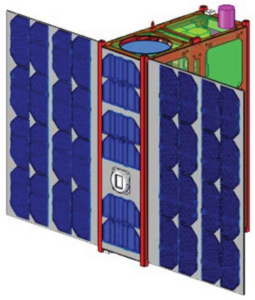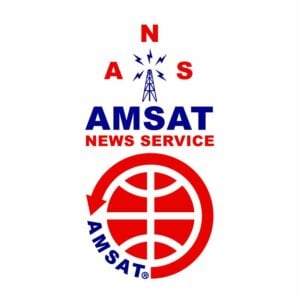
AMSAT News Service
ANS-231
August 18, 2024
In this edition:
- Registration Now Open for the 42nd Annual AMSAT Space Symposium & Annual General Meeting
- Call for Papers
- AMSAT Board of Directors Election Underway
- AMSAT Mail Alias Service to End August 31, 2024
- Changes to AMSAT TLE Distribution for August 16, 2024
- ARISS News
- Upcoming Satellite Operations
- AMSAT Ambassador Activities
- Satellite Shorts From All Over
The AMSAT News Service bulletins are a free, weekly news and information service of AMSAT, The Radio Amateur Satellite Corporation. ANS publishes news related to Amateur Radio in Space including reports on the activities of a worldwide group of Amateur Radio operators who share an active interest in designing, building, launching and communicating through analog and digital Amateur Radio satellites.
The news feed on https://www.amsat.org publishes news of Amateur Radio in Space as soon as our volunteers can post it.
Please send any amateur satellite news or reports to: ans-editor [at] amsat.org
You can sign up for free e-mail delivery of the AMSAT News Service Bulletins via the ANS List; to join this list see: https://mailman.amsat.org/postorius/lists/ans.amsat.org/
Registration Now Open for the 42nd Annual AMSAT Space Symposium & Annual General Meeting

The 42nd Annual AMSAT Space Symposium and Annual General Meeting will be held on Friday through Saturday, October 25-26, 2024, at the DoubleTree by Hilton Tampa Rocky Point Waterfront in Tampa, Florida.
Highlights of all scheduled events include:
- AMSAT Board of Directors Meeting, October 24-25
- 42nd AMSAT Space Symposium and Annual General Meeting, October 25-26
- Friday Night Social and Auction, October 25
- AMSAT Banquet and Reception, October 26
- AMSAT Ambassador Breakfast (all are welcome), October 27
Note – if you wish to register guests for the banquet and/or breakfast who are not attending the Symposium sessions, you must register for each event separately and include your guests with your banquet and breakfast tickets.
If you are interested in presenting or submitting a paper for inclusion in the Symposium Proceedings, please see the Call for Papers.
IMPORTANT: The deadline for Symposium registrations if you want to include the Saturday evening banquet or Sunday breakfast is Friday, October 18th. Meals cannot be ordered after that date.
Click Here to Register Now
Hotel Reservations
The rate for a standard room with two Queen beds is $169.00 plus state and local taxes of 14.5%. Rooms may be available for check-in on Wednesday, October 23 and check out Sunday, October 27.
Rooms can be reserved at https://www.hilton.com/en/attend-my-event/radioamateursatellite/.
Reservations may also be made by phone at 813-888-8800. Reference AMSAT to receive the group rate.
Note: If you are planning on driving to the Symposium or renting a car, parking charges are $20 per night for overnight parking.
We, at AMSAT, are excited to be able to host our 42nd annual Symposium this year. We hope that you can join us in celebrating Amateur Radio in Space.
Schedule
Thursday, October 24, 2024
8:00 AM – 6:00 PM AMSAT Board Meeting
6:00 PM – 8:00 PM Pre-Registration Check-in
Friday, October 25, 2024
8:00 AM – 12:00 Noon AMSAT Board Meeting (Closed Session)
9:00 AM – 4:00 PM Registration
1:00 PM – 1:15 PM AMSAT Symposium Kickoff, President’s Welcome
1:15 PM – 5:00 PM Paper Sessions
5:00 PM – 7:00 PM Informal Dinner on your own
7:00 PM – 9:00 PM AMSAT Reception and Auction, Cash Bar Available
Saturday, October 26, 2024
8:00 AM – 11:45 AM Registration
8:00 AM – 8:15 AM AMSAT Symposium Welcome
8:15 AM – 12:00 Noon Paper Sessions
1:00 PM – 3:15 PM Paper Sessions
3:30 PM – 4:45 PM AMSAT Annual Meeting & Awards Ceremony
6:00 PM – 7:00 PM Attitude Adjustment (Social), Cash Bar
7:00 PM – 10:00 PM AMSAT Banquet, Cash Bar
Sunday, October 27, 2024
7:30 AM – 9:00 AM AMSAT Ambassador Breakfast (All are welcome)
[ANS thanks the AMSAT Symposium Committee for the above information]
Call for Papers
This is the first call for papers for the 42nd annual AMSAT Space Symposium to be held on the weekend of October 25-27, 2024 at the Doubletree by Hilton Tampa Rocky Point Waterfront in Tampa, Florida.
Proposals for symposium papers and presentations are invited on any topic of interest to the amateur satellite community. We request a tentative title of your presentation as soon as possible, with final copy submitted by October 18 for inclusion in the symposium proceedings. Abstracts and papers should be sent to Dan Schultz, N8FGV at [email protected]
[ANS thanks Dan Schultz, N8FGV, AMSAT Symposium Proceedings Editor for the above information]
AMSAT Board of Directors Election Underway
The nomination period for the 2024 AMSAT Board of Directors Election ended on June 15th. The following candidates have been duly nominated:
- Mark Hammond, N8MH
- Frank Karnauskas, N1UW
- Bruce Paige, KK5DO
- Paul Stoetzer, N8HM
- Douglas Tabor, N6UA
As three seats on the Board of Directors are up for election this year, the three candidates receiving the largest number of votes shall be declared elected to the seats. The two candidates receiving the next largest number of votes shall be declared First Alternate and Second Alternate, respectively.
The voting process is now underway. AMSAT members can find candidate statements and electronic voting information on AMSAT’s Wild Apricot Membership Portal.
The voting period will conclude on September 15th and results will be announced no later than September 30th.
[ANS thanks Jeff Davis, KE9V, AMSAT Secretary for the above information]
AMSAT Mail Alias Service to End August 31, 2024
A long-standing member service, the AMSAT Mail Alias Service is scheduled to end on August 31, 2024. A mail alias on AMSAT.ORG permitted people to send an email to members without knowing their actual internet email address. They just needed to know their amateur radio callsign.
Unfortunately, the unchecked rise in domain name hacking and email account high-jacking has made it impossible to sustain this service at a cost-effective level. The number of [email protected] email accounts that had been hijacked and converted to zombie spam accounts over the years had led many internet service providers and gateway centers to ban all @amsat.org email addresses, including those business accounts of AMSAT officers and officials. The tireless efforts of AMSAT’s all volunteer IT staff has worked for years to repair much of the damage, but AMSAT still get complaints from members who are not getting their personal emails, ANS bulletins or AMSAT-BB posts because of persistent delivery problems.
It has come to the point where the AMSAT volunteer IT staff can no longer keep up with the maintenance requirements to keep the alias mail list clean and to work with email gateways to remove blocks. And, after considerable investigation into alternative paid email services, AMSAT leadership decided that the money required to keep an email alias system alive would be better spent on building and flying satellites for its members.
Persons using the Mail Alias Service should begin to migrate to different email accounts so they do not lose receipt of personal emails, AMSAT News Service Weekly Bulletins, AMSAT-BB posts, or official messages from AMSAT itself. Members are especially asked to make sure they are NOT using a [email protected] as their registered email address in the AMSAT membership portal. Members can easily change their registered member email address by logging into the portal and updating their profile.
[ANS thanks the AMSAT IT Team for the above information]
The 2024 Coins Are Here Now!
Help Support GOLF and Fox Plus.
Join the AMSAT President’s Club today!
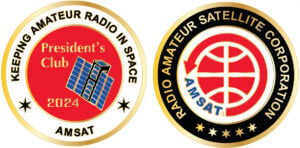
Changes to AMSAT TLE Distribution for August 16, 2024
Two Line Elements or TLEs, often referred to as Keplerian elements or keps in the amateur community, are the inputs to the SGP4 standard mathematical model of spacecraft orbits used by most amateur tracking programs. Weekly updates are completely adequate for most amateur satellites. TLE bulletin files are updated Thursday evenings around 2300 UTC, or more frequently if new high interest satellites are launched. More information may be found at https://www.amsat.org/keplerian-elements-resources/
The following satellites have been removed from this week’s AMSAT TLE distribution:
KASHIWA NORAD Cat ID 59508 Decayed from orbit on or about 10 August 2024
SPROUT NORAD Cat ID 39770 Decayed from orbit on or about 11 August 2024
[ANS thanks Joe Fitzgerald, KM1P, AMSAT Orbital Elements Manager, for the above information]
Need new satellite antennas?
Purchase an M2 LEO-Pack from the AMSAT Store!
When you purchase through AMSAT, a portion of the proceeds goes towards Keeping Amateur Radio in Space.
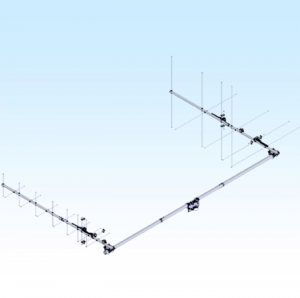
ARISS News
Amateurs and others around the world may listen in on contacts between amateurs operating in schools and allowing students to interact with astronauts and cosmonauts aboard the International Space Station. The downlink frequency on which to listen is 145.800 MHz worldwide.
Bayou Academy, Cleveland, MS, direct via W5YD
The ISS callsign is presently scheduled to be NA1SS
The scheduled crewmember is Sunita Williams KD5PLB
The ARISS mentor is K4RGK
Contact is go for: Thu 2024-08-22 16:43:06 UTC 80 deg
Watch for Livestream at https://www.youtube.com/live/PzZuhb1bGiw https://live.ariss.org/
Gymnasium der Stadt Meschede, Meschede, Germany, direct via DRØZ
The ISS callsign is presently scheduled to be OR4ISS
The scheduled crewmember is Sunita Williams KD5PLB
The ARISS mentor is IN3GHZ
Contact is go for: Fri 2024-08-23 08:05:04 UTC 45 deg
As always, if there is an EVA, a docking, or an undocking; the ARISS radios are turned off as part of the safety protocol.
The crossband repeater continues to be active (145.990 MHz up {PL 67} & 437.800 MHz down), If any crewmember is so inclined, all they have to do is pick up the microphone, raise the volume up, and talk on the crossband repeater. So give a listen, you just never know.
Note, all times are approximate. It is recommended that you do your own orbital prediction or start listening about 10 minutes before the listed time.
The latest information on the operation mode can be found at https://www.ariss.org/current-status-of-iss-stations.html
The latest list of frequencies in use can be found at https://www.ariss.org/contact-the-iss.html
[ANS thanks Charlie Sufana, AJ9N, one of the ARISS operation team mentors for the above information]
Upcoming Satellite Operations
A growing number of satellite rovers are currently engaged in sharing their grid square activations on https://hams.at. By visiting the website, you gain easy access to comprehensive information about the operators responsible for activating specific grid squares. Additionally, you have the ability to assess the match score between yourself and a particular rover for a given pass, while also being able to identify the upcoming satellite passes that are accessible from your location.
Philippe, EA4NF will be QRV (as KE4NF) from EL94 13-17 Aug, then EL95 25-27 Aug. Looks like this will be FM LEO only. Log as KE4NF.
In between these two activations, Philippe will activate Grenada (FK92) as J38NF on FM satellites, August 18-23. Log as J38NF.
[ANS thanks Ian Parsons, K5ZM, AMSAT Rover Page Manager, for the above information]
Want to fly the colors on your own grid expedition?
Get an AMSAT car flag and other neat stuff from our Zazzle store!
25% of the purchase price of each product goes towards Keeping Amateur Radio in Space
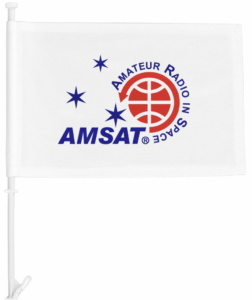
AMSAT Ambassador Activities
AMSAT Ambassadors provide presentations, demonstrate communicating through amateur satellites, and host information tables at club meetings, hamfests, conventions, maker faires, and other events.
AMSAT Ambassador Clint Bradford, K6LCS, says,
“Think a 75-minute presentation on “working the easy satellites” would be appropriate for your club or event? Let me know by emailing me at k6lcsclint (at) gmail (dot) com or calling me at 909-999-SATS (7287)!”
Clint has NEVER given the exact same show twice: EACH of the 150+ presentations so far has been customized/tailored to their audiences.
Scheduled Events
Northeast HamXpostion
August 22-25, 2024
Best Western Royal Plaza Hotel & Trade Center
181 Boston Post Road W
Marlborough, MA 01752
Greater Louisville Hamfest
September 7, 2024
Shepherdsville, KY
AMSAT Forum and Information Table
W4FCL
Central Kentucky Hamfest
October 5, 2024
Lexington, KY
AMSAT and Educational Satellites Forum and Information Table
AI4SR and W4FCL
North Star Radio Convention
October 5, 2024
Hennepin Technical College (North Campus)
Brooklyn Park, Minn.
AMSAT Forum and Information Table
KØJM and ADØHJ
Radio Society of Tucson
October 5, 2024
Calvary Tucson Church
7811 E. Speedway
Tucson, AZ
https://k7rst.club/2024/07/tucson-autumn-ham-fest-2024/
N1UW
Pacificon 2024, ARRL Pacific Division Conference
October 18-20, 2024
San Ramon, CA
WU0I
2024 AMSAT Space Symposium and Annual General Meeting
October 25-27, 2024
Doubletree by Hilton Tampa Rocky Point Waterfront
3050 N Rocky Point Dr W
Tampa, FL 33607
Stone Mountain Hamfest, ARRL State Convention
November 2-3, 2024
Stone Mountain, GA
K4RGK
Oro Valley Amateur Radio Club
November 9, 2024
Marana Middle School
11285 West Grier Rd.
Marana, AZ 85653
https://www.tucsonhamradio.org/copy-of-hamfest-2022
N1UW
Yuma HAMCON
February 20-22, 2025
Yuma, AZ
N1UW
[ANS thanks Bo Lowrey, W4FCL, Director – AMSAT Ambassador Program, for the above information]
Satellite Shorts from All Over
+ A Chinese Long March 6A rocket launched 18 Qianfan broadband Internet satellites into polar orbit last week. Shanghai Spacecom Satellite Technology (SSST)’s new constellation, translated as “Thousand Sails,” may grow to as many as 14,000 satellites. It joins potentially two other under-development broadband Chinese megaconstellations, each proposing over 10,000 satellites, in competition with OneWeb, Kupier, and Starlink. Unfortunately, the LM-6A’s upper stage appears to have malfunctioned and scattered over 700 pieces of space debris in a fairly high 800 km orbit (again). The debris at this altitude will likely take about a century for orbital decay. (ANS thanks The Orbital Index for the above information)
+ Orbital Space has announced its Lunar Program to send a student-built experiment to the Moon, marking the Arab world’s first privately funded lunar mission. The experiment by students from AGH University of Science and Technology in Poland focuses on analyzing interactions between lunar regolith and various materials that could be used in making cables and connectors for future lunar missions. Astrobotic will carry the payload on its third lunar mission aboard a Griffin-class lunar lander, targeting launch no earlier than Q4 2026. (ANS thanks Spacewatch Global for the above information)
+ The 2024 Olympic Games officially began in Paris, France on July 26, with athletes coming from around the world to compete. Meanwhile, above the world — on our orbiting laboratory, the International Space Station — NASA’s astronauts got into the Olympic spirit. Check out their training montage from space, followed by a message to Earth from astronaut Matt Dominick at https://www.youtube.com/watch?
+ From Dave, G4DPZ, regarding the FUNcube Data Warehouse: “Our hosting provider has told us that they will be migrating our services to a new virtual machine on the 1st of September. Unfortunately the versions of the MySQL database server and Java runtime available on the new instance are not compatible with the current application implementation. Therefore I have to rebuild the development tool chain and migrate the application to suit the new instance. The work is underway but may take us into early September. We do know that database table migration works as we have already done a test of migrating the several GB of database between machines. If we do have any outage, the dashboards will upload when they detect the new instance is alive.” (ANS thanks Dave Johnson, G4DPZ, Hon. Sec., AMSAT-UK, for the above information)
+ The SpaceX Transporter-11 rideshare mission launched 116 payloads from Vandenberg Space Force Base in California on August 16th. Four of these payloads carry transmitters on amateur bands. NIGHTJAR and TORO carry amateur UHF transmitters, but are not IARU coordinated. QUBE carries an amateur UHF transmitter, but its IARU coordination was declined. ORESAT0.5 is the sole IARU coordinated amateur mission on this launch with downlinks of 436.500 MHz and 2422.0 MHz. More information about ORESAT can be found at https://www.oresat.org/satellites/oresat0-5. Discussion regarding this launch can be found on the LibreSpace forum at https://community.libre.space/t/spacex-f9-transporter-11-rideshare-vsfb-slc-4e-2024-08-16-18-19-utc/11973/1 (ANS thanks LibreSpace and the ORESAT team for the above information)
+ Three AMSAT GridMaster Awards were awarded over the past week: #67 was awarded to Endaf, N6UTC, #68 was awarded to Raymond, KN2K, and #69 was awarded to Steven, KC1MMC. Congratulations to both. Additionally, two Reverse VUCC Awards were issued. #15 was awarded to Sean, KX9X, with 103 grids and #16 was issued to Randy, ND0C, with 109 grids. Congratulations to all the new award recipients! More information about AMSAT’s awards program can be found at https://www.amsat.org/awards-2/ (ANS thanks Bruce Paige, KK5DO, AMSAT Director of Contests and Awards for the above information)
+ IO-117’s digipeater has not been operational for the past week. No further information is available regarding its status or expected timeframe for a potential return to service.
+ AMSAT’s Operations team, in coordination with the University of Maine and AMSAT Engineering, continues to work to complete MESAT1’s science mission. More telemetry coverage is needed! If you have UHF receive capability, please download FoxTelem and help us capture more data. (ANS thanks AMSAT for the above information)
Join AMSAT today at https://launch.amsat.org/
In addition to regular membership, AMSAT offers membership to:
- Societies (a recognized group, clubs or organization).
- Primary and secondary school students are eligible for membership at one-half the standard yearly rate.
- Post-secondary school students enrolled in at least half time status shall be eligible for the student rate for a maximum of 6 post-secondary years in this status.
- Memberships are available for annual and lifetime terms.
Contact info [at] amsat.org for additional membership information.
73 and remember to help Keep Amateur Radio in Space!
This week’s ANS Editor,
Paul Stoetzer, N8HM
n8hm [at] arrl.net
ANS is a service of AMSAT, the Radio Amateur Satellite Corporation, 712 H Street NE, Suite 1653, Washington, DC 20002
